The increasing price of precious metals has prompted mineral prospectors to consider unusual places. Jon Evans looks into the future of mining
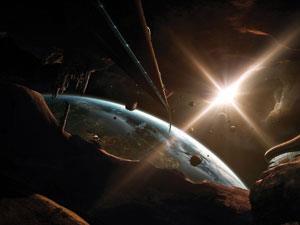
Mining is already a reasonably extreme activity, moving and processing large quantities of material in often unpleasant and hazardous conditions. But imagine how much more extreme it would be to mine at the bottom of the ocean or on asteroids in the depths of space. That is exactly what a few pioneering companies are planning to do.
The impetus for these extreme forms of mining is the recent dramatic rises in the price of many metals, driven by dwindling supplies from conventional land-based sources and by large increases in demand outstripping available supply. This is the case for bulk metals such as copper, nickel and cobalt, precious metals such as gold and platinum, and the so-called rare earth elements such as lanthanum and neodymium that are used in many modern technologies.
Since 2000, the price of copper has quadrupled and the price of platinum has tripled. The rare earth elements have collectively increased in price by a factor of 20 since 2005. This all means that potential sources of these metals that were previously dismissed as too far-fetched, such as the ocean floor and asteroids, have now become economically viable – at least theoretically.
Indeed, the mineral resources potentially available on the ocean floor and in asteroids are quite staggering. It has been estimated that an area of sediment just 1km2 at the bottom of the Pacific Ocean near Hawaii contains enough rare earths to meet one-fifth of global annual demand, while a single platinum-rich 500m-wide asteroid could yield around 1.5 times the known global reserves of platinum group metals.
But even though the economics of extracting metals from the ocean floor and asteroids may now be more favourable, the technical obstacles remain substantial. Despite lots of planning, no deep-sea mining operations have yet been undertaken, and the necessary technologies for asteroid mining have not even been developed. The potential environmental costs could be also be high: deep-sea mining may cause major disruption to ocean habitats, while asteroid mining could cause one to crash into the Earth.
20,000 leagues under the sea
Of the two, deep-sea mining is the closest to becoming a reality. The idea of extracting metals from the ocean floor actually goes back over 100 years, to the late 19th century discovery of metal-rich, potato-sized polymetallic nodules on the seabed. Since then, interest has tended to wax and wane, but is currently very high.
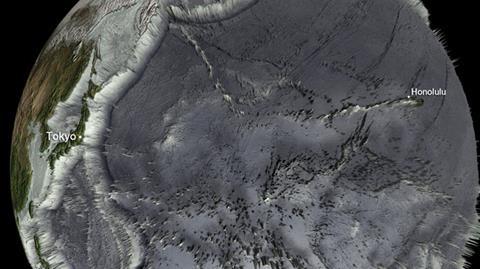
‘The interest in deep-sea mining has gone up and down with the price of metals,’ says David Billett, a deep-sea ecologist at the National Oceanography Centre in Southampton, UK, and an expert on deep-sea mining. But he adds that another factor driving the current interest is the growing realisation that polymetallic nodules are not the only game in town.
As their name suggests, polymetallic nodules comprise a mixture of different metallic elements: manganese and iron tend to be the most abundant, but they can also contain useful concentrations of more valuable metals such as nickel, copper and cobalt. More recently, scientists have confirmed that they can even contain low concentrations of rare earth elements.
Nodules have been found on the floors of most of the world’s oceans, with particularly rich deposits in the Pacific Ocean between Hawaii and Mexico, and in the central Indian Ocean. ‘There are about 500 billion tonnes of these nodules sitting on the ocean floor,’ says Billett. They are built up by the slow precipitation of the metals from seawater, perhaps assisted by the activity of microorganisms, growing at a rate of just 1mm every million years.
And similar precipitation processes take place on ocean ridges and shelves, producing various other metal-rich deposits. For example, there are the cobalt-rich ferromanganese crusts that form on the sides and summits of underwater volcanic mountains at depths of 400–4000m.
These cobalt-rich crusts can be up to 25cm thick and, despite their name, consist mainly of manganese and iron, although cobalt is present at higher concentrations than in nodules (0.8% by weight compared with 0.25% in nodules). Of particular interest is the fact that these crusts can also contain significant quantities of valuable metals such as nickel, lead, cerium, molybdenum, vanadium and platinum, with some of the richest crusts found in the western Pacific.
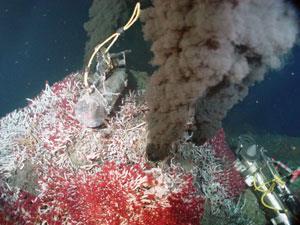
There are also the polymetallic massive sulfides that form around the hydrothermal vent systems at the edge of tectonic plates. Here, molten rock rises up from the planet’s interior through huge cracks to form new seabed. When seawater enters these cracks, it is heated by to temperatures as high as 400°C before gushing out of vents in the seabed, carrying with it dissolved metals from the molten rock. As the water cools, these metals precipitate to form the massive sulfide deposits.
These deposits were only discovered in 1979, along with the unique ecosystems that live around the vent systems. The composition of the deposits differs in different regions, but they can contain high concentrations of copper, zinc, lead, silver and gold.
Most recently, a team of Japanese scientists discovered that even ocean sediment contains useful metal deposits. In 2011, they reported finding high concentrations of rare earth elements in samples of normal seafloor sediment taken from across the Pacific Ocean. These high concentrations seem to be caused by certain minerals in the sediment preferentially taking up rare earths from the seawater. They found that the rare earths could easily be extracted from the sediment by acid leaching.
Above us the waves
So there appears to be no shortage of metal-rich resources available for mining throughout the world’s oceans. As a consequence, various governments and companies are now busy snapping up exploration and mining rights to vast tracts of the ocean floor in international waters, with these rights administered by a UN body called the International Seabed Authority (ISA). ‘The ocean is suddenly filling up very quickly with these new applications for licences,’ says Billett, who is a member of the ISA’s Legal and Technical Commission, a group of around 25 experts in environmental science, geology and law that advises the ISA.
In most cases, obtaining licences is as far as these efforts have gone, but a couple of organisations are getting close to conducting commercial deep-sea mining. One of the closest is the Canadian company Nautilus Minerals, which has plans to mine polymetallic massive sulfides just off the coast of Papua New Guinea at a depth of around 1600m. According to Nautilus, these massive sulfides contain high concentrations of copper, gold, silver and zinc.
Using remote-controlled mining machines developed by British company Soil Machine Dynamics, Nautilus will break up the massive sulfides and transport the fragments through a 1.6km-long pipe to a production support vessel on the surface. Nautilus intended to start mining last year, but a legal dispute with the government of Papua New Guinea, which regulates mining of the massive sulfides because they are in its territorial waters, has postponed the whole venture. However, Nautilus has also obtained licences to mine other deposits, including polymetallic nodules in the central Pacific, and may now turn its attention to these.
Other organisations are also following close behind. In March 2013, UK Seabed Resources, a subsidiary of the US engineering and technology giant Lockheed Martin, announced that it had been awarded a licence by the ISA to explore a 58,000km2 area of the Pacific for polymetallic nodules. Sponsored by the British government, UK Seabed Resources hopes to begin mining the nodules in 2019, which will involve scraping them from the seafloor at depths of around 4000m.
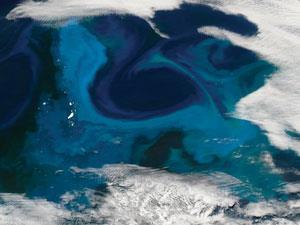
With deep-sea mining probably now just a matter of time, concerns are being raised about its environmental effects: the ocean floor is currently a fairly pristine environment, but mining could change all that. For a start, scraping the ocean floor and breaking apart massive sulfides will damage ocean habitats, including that of the unique ecosystems found around hydrothermal vents. It will also generate plumes of sediment that could kill off organisms that feed by filtering nutrients from the water and send nutrient-rich water up to the surface, altering nutrient distribution and encouraging phytoplankton blooms.
However, the organisations looking to conduct deep-sea mining say they are committed to protecting the marine environment as far as possible. Indeed, protecting the environment is an important condition of the licences issued by the ISA and Billett thinks that it should be possible to contain any damage. ‘We’re used to accepting limited impacts on land as long as they’re properly managed, so the same sort of rationale will apply to the oceans,’ he says.
Deep space mine
As befits an idea that seems like science fiction, the advent of asteroid mining is much further in the future. Nevertheless, two new US companies, Planetary Resources and Deep Space Industries, last year announced plans to mine metals and other materials from near-Earth asteroids (NEAs). These are asteroids that have been knocked out of the main belt between Mars and Jupiter and now have orbits that bring them close to the Earth.
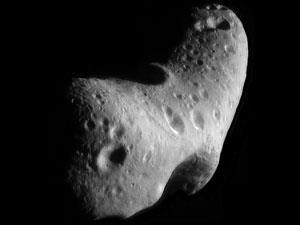
The approaches of both companies are very similar. They will begin by sending up fleets of small spacecraft to catalogue NEAs, of which around 9,000 are currently known, and then analyse the most interesting ones more closely in order to determine their composition. Finally, they will select asteroids to mine.
This will involve either transporting mining equipment to a free-flying asteroid, requiring asteroids with orbits that bring them close to the Earth fairly regularly so that the mined material can be transported back down, or moving an asteroid into a stable orbit around the Earth. Either way, it is an immense technical challenge that will require a whole host of new technology.
What is not in doubt is that asteroids are a major source of valuable metals. ‘We know the composition of some asteroids very well,’ says Mark Sephton, professor of organic geochemistry and meteoritics at Imperial College London, UK. ‘Asteroids can contain lots of free iron and precious metals, so they represent great opportunities.’ According to Deep Space Industries, if just 10% of the mass of the asteroid that passed close by the Earth in February 2013 consisted of iron, nickel and other metals, then it would have been worth $130 billion (£85 billion).
Our knowledge of asteroid composition comes mainly from analysing meteorites, which are fragments of asteroids that have fallen to Earth. But it has also come from spectral studies of asteroids in space and from the Japan Aerospace Exploration Agency’s Hayabusa spacecraft, which returned the first samples collected from an NEA in 2010, although they were no more than dust particles.
The are three broad classes of asteroids: carbonaceous, silicaceous and metallic. Carbonaceous asteroids contain lots of organic material and water; silicaceous asteroids are a mixture of iron and magnesium silicates; metallic asteroids are dominated by iron, but also contain other metals such as nickel and platinum.
For metal mining, silicaceous and metallic asteroids are obviously of most interest, but carbonaceous asteroids would also have their uses. Planetary Resources and Deep Space Industries do not just want to mine material from asteroids for use on Earth, they also want to use these materials to build infrastructure in space.
At the moment, we have to bring all the equipment required in space, including propellant for spacecraft, from Earth, which is highly expensive. It would be much easier if we could just build everything in space, with the raw material supplied by asteroids. To this end, Deep Space Industries is developing a novel kind of 3D printer, called the MicroGravity Foundry, which will be able to fabricate equipment in space from the nickel in asteroids.
Under this scenario, the water in carbonaceous meteorites could be used to produce propellant for spacecraft, as well as for many other purposes. Planetary Resources estimates that a single 500m-wide carbonaceous asteroid could supply more than 200 times the propellant used in all the rockets ever launched in human history.
There would also be no environmental issues, as the mining would take place far from the surface of the Earth. The only potential risk is that an asteroid may escape from its stable orbit and slam into the Earth, with potentially catastrophic consequences. But Sephton thinks this unlikely: ‘If you’re clever enough to get up there and start to mine a NEA, you’ll have taken all the possibilities of changes to the celestial mechanics of asteroids and their orbits into account.’
Both Planetary Resources and Deep Space Industries plan to launch their first cataloguing spacecraft over the next couple of years, although the actual mining of asteroids is probably at least a decade away. Nevertheless, the day should eventually arrive, as the resource potential offered by meteorites is just too enticing.
As is often the way, extreme mining, whether in the depths of the oceans or space, is simply following the money.
Jon Evans is a science writer based in Bosham, UK
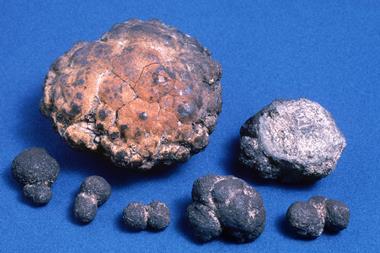
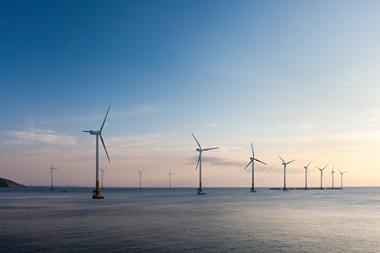










No comments yet